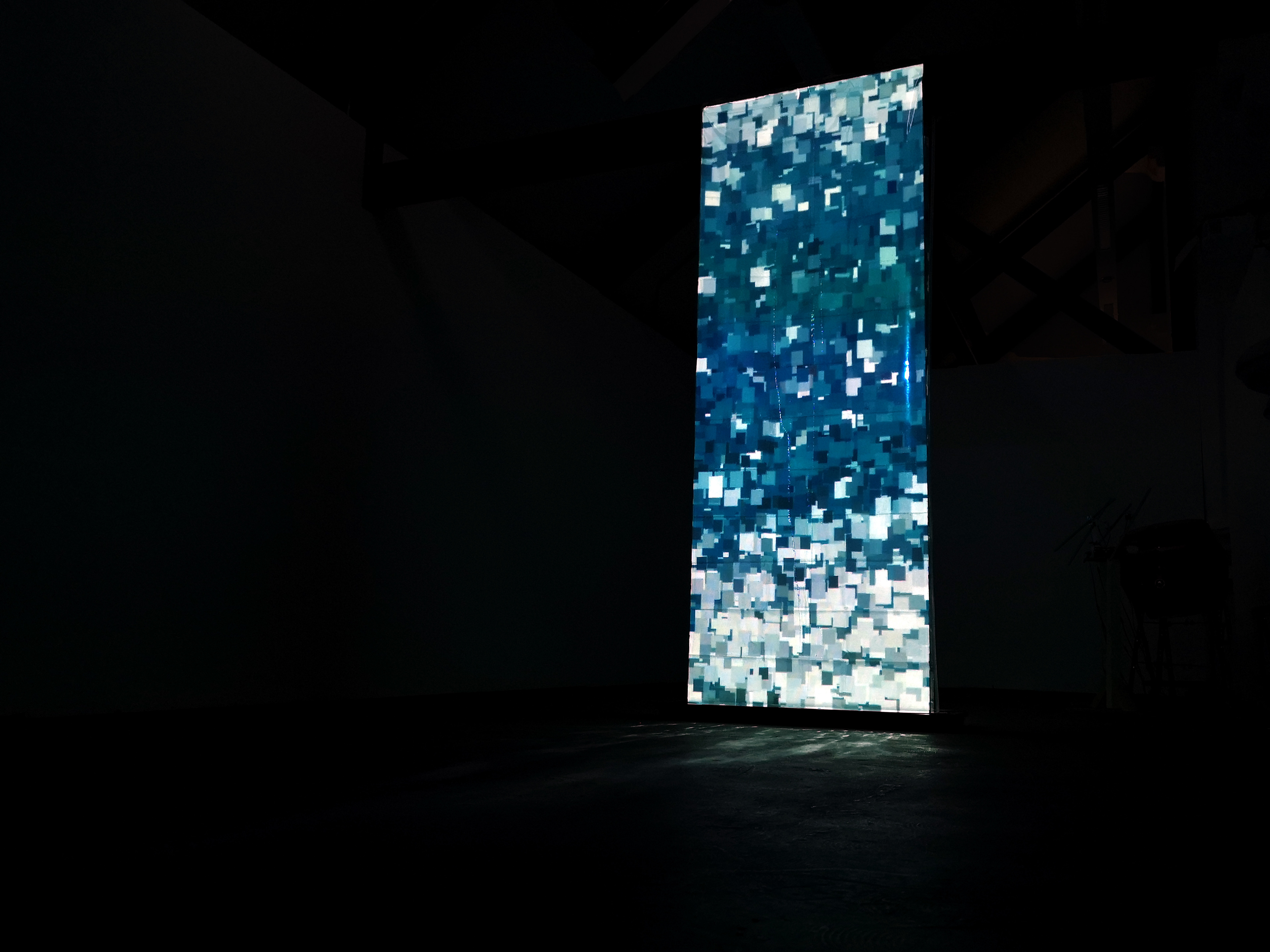Immersion aims to expand the perception of water and invites us to reconsider our relationship with and responsibility towards it. As Astrida Neimanis writes in ‘Bodies of Water’: “If body is something we are, not something we have then that implicates to me that the sea, the ocean, the waters isn’t what we have but also what we are.” The work is an invitation to build intimacy with water, an opportunity to stop and pay attention to it. Water is both subject and medium in the Immersion, it circulates up and flows down the installation, where it combines and travels up again – representing the cycle of water. The projection evolves over time and reacts to the changes in the Baltic Sea (real-time observations).









This project is part of my continuous research about water and our relationships towards it/us (bodies of water). The visuals in the Immersion are an altered recording of waves at the beach (Cape Kolka, Latvia) from where the API data is being called. The videos were taken on July 2019, but the visuals keep being transformed in real-time by the wind and gust speed at this beach, just like the waves in the sea.
Water is not a renewable source, there is always the same amount of water never less or more. It only might change its state/form from liquid to hard or gas – this time maybe also digital. In this installation the two pumps working sequentially are a representation of the cycle/travel of water, they each take the water different routes, but it always mixes together and there is never less or more of it.
With this installation, I wanted to make people look at water more personally not just as a substance. By simply having the awareness and not forgetting how much our lives are enriched by water, we can go towards a better and more sustainable future.
References
France, R. (2003). Deep immersion. Sheffield, Vt.: Green Frigate Books.
Neimanis, A. (2017). Bodies of Water: Posthuman Feminist Phenomenology.